


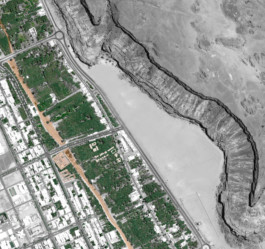
The Cultural Center Villa Hegra is polycephalous. It is a hybrid, multiple environments, a space for work, learning, meetings and representation.The peripheral enclosure integrates all the activities articulated around a vast courtyard in the heart of the building, a central void offering a breath of fresh air, an agora in the middle of a density of activities arranged around it. It functions at once as a unifying space, as a distribution space and a transition space, as an inhabited threshold, a link to the interior public spaces. All of the activities integrated into the peripheral thickness are largely open towards the courtyard, giving a very dynamic and active character visible from the agora.
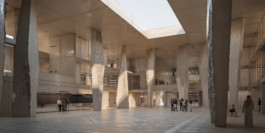

Secondary but equally important links are introduced in the layout of the program elements. These are what we call informal spaces, secondary voids positioned between the program elements and punctuating the peripheral thickness of the upper levels. These informal spaces are places where events or meetings can occur at any time. These open programming areas are placed in front of the oasis, between the cultural and educational activities.





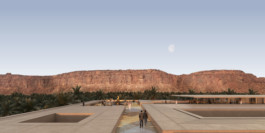

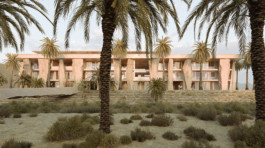
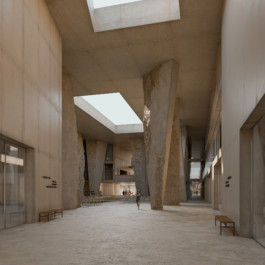
Here, the megaliths are made of tinted and textured concrete. They are arranged all around, outside and inside the central hall of the Villa. Their spatial arrangement, their dimension, and their morphology, give them a federative and telluric role.
The megaliths also have a climatic role. These large mineral masses filter the sun’s rays, increase the surface area of the shadow projected on the facades and narrow the passages creating air flows towards the interior of the hall.
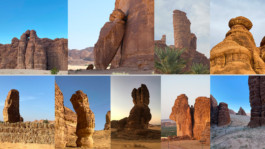
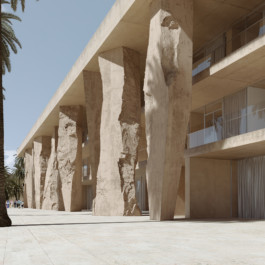
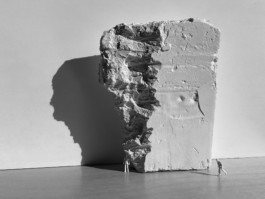
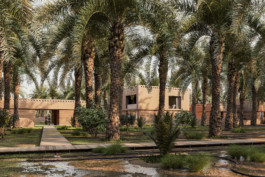
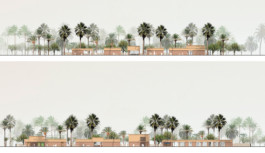
The oasis is a large inhabited garden, in the image of the ancients who deployed their summer houses under the palm trees. Here, in the manner of the ancient inhabitants, we have relied on the trace of the historical walls to organize the inhabited garden.
The oasis is regenerated according to the existing layout. The soil of the oasis must be as fertile as possible. The constructions are thus arranged according to a logic of grouped dissemination in order to preserve the natural soil of the oasis as much as possible. The residences are placed in the oasis between the existing palm grove and the ruined historical wall that we will restore. The buildings are single-story, defining horizontal silhouettes, a form of thickening of the ground in order to be as unobtrusive as possible and to leave visual porosity above the roofs, towards the depths of the palm grove. The Social Club is positioned along a low north-south wall, on the edge of the agrarian zone, with the café-restaurant facing the wadi and the yoga spaces and the club’s administration back around a courtyard.

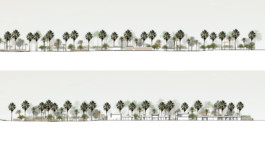
Project
Welcome pavilions for the Wadi Alfann valley of the arts
Location
Alula, Saoudi Arabia
Tender
Public
Surface
6130 m²
Team
Projectiles, lead architect
Terrell, all trade engineer
8'18’, lighting
Studio 4215 , sustainable development
Michel Desvigne Paysagiste, landscaper
Client
The Royal commission for Al-'Ula (Rcu) & Afalula
Phase
Competition
share